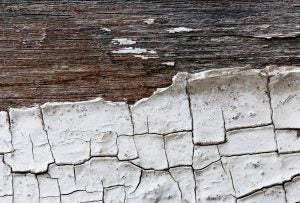Tom Neltner, J.D., is Chemicals Policy Director
[Updated 2-15-18: The California Supreme Court denied the industry appeal]
Yesterday, after three years of deliberations, California’s Appellate Court for the Sixth District held that three defendant companies – Sherwin-Williams Company, NL Industries, and ConAgra Grocery Products[1]— created a public nuisance in ten plaintiff jurisdictions in the state by promoting the use of lead-based paint in the interior of residences built before 1951 even though they had actual knowledge of the harm the paint would pose to children. The case now goes back to the trial court to determine the amount that defendants must pay into a fund to remediate pre-1951 homes with lead-based paint in those jurisdictions and to appoint a suitable receiver to manage the fund.
The Court of Appeals’ decision requires remediation of the lead-based paint, but not its complete removal, in the ten California jurisdictions that were plaintiffs in the case. The jurisdictions are: seven counties, Santa Clara, Alameda, Los Angeles, Monterey, San Mateo, Solano, and Ventura; two cities, Oakland and San Diego; and the city and county of San Francisco.

The case, which began in 2000, rests on public nuisance law in California. While all states prohibit public nuisances to protect the public from threats to their health and safety, the requirements vary significantly among the states and rely heavily on precedent set in prior state court decisions. In California, a public nuisance action requires proof that a defendant knowingly created or assisted in the creation of a substantial and unreasonable interference with a public right. The defendants must have actual knowledge of the public health hazard.
In 2010, the California Supreme Court overruled a previous decision by the trial court and provided key interpretations of public nuisance law that shaped yesterday’s court decision. While the paint companies are expected to appeal this decision to the California Supreme Court, the decision is likely to stand because the Appellate Court hewed closely that court’s 2010 decision.
The Appellate Court for the Sixth District was reviewing a 2014 trial court’s decision that the Sherwin-Williams Company, NL Industries, and ConAgra Grocery Products must pay $1.15 billion to remediate homes built before 1978 with lead-based paint in the plaintiff’s jurisdiction. The three judge panel of the Court of Appeals narrowed the scope of the trial court’s decision from homes built before 1978 to those built before 1951. The panel found that there was insufficient evidence that the three companies had promoted lead-based paint for interior residential use after 1950, even though they may have sold the paint after that date.
Similar cases had been brought in other states including Illinois, New Jersey and Rhode Island. In 2008, the Rhode Island Supreme Court overturned a trial court decision finding paint companies liable for the state’s public nuisance law. The California court found its case was different because it involved an extensive assessment of voluminous evidence presented at trial. The other cases were decided on pleading and did not get to the merits of the evidence.
While lead-based paint is not the only source of lead exposure to children, it is the most significant for those children living in homes with lead-based paint, especially when the paint is deteriorated. Thousands of children still live in homes with lead-based paint hazards – with poor and minority children at greatest risk. This court decision is a first step that will hold companies responsible and result in the removal of toxic lead paint in homes across California and may serve as a roadmap for other states.
[1] ConAgra was a defendant because it had owned Fuller Paint Company’s liabilities through a series of mergers.









